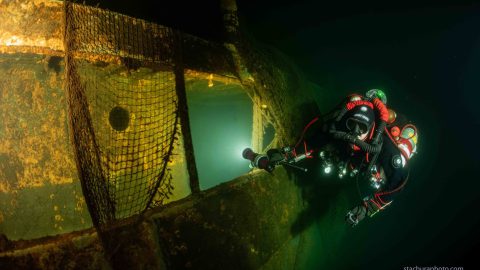Thursday, 16 May 2024
Menu

The discovery of the mechanism by sponge fishermen in 1900, was one of the most important and spectacular wreck finds in human history. Interestingly, at first researchers claimed that the ancient computer did not come from an ancient wreck. All because such complex mechanisms first appeared only in the 17th-18th centuries.

The person who first started a thorough investigation of the strange find was Derek Price from Yale University. Among other things, he made an X-ray examination of the fragments found. Price was so fascinated by the find that he devoted most of his life trying to solve the mystery of how the the mechanism from Antikythera.
This resulted in the publication of a scientific paper (1974) after 20 years of research. Price stated in it that the device consisted of 31 gears and determined the position of the Sun and the Moon. He also made an imperfect and flawless replica of the mechanism. However, his results were rejected by most of the scientific world. It was claimed that it was an unrealistic achievement for the science of the time.

Fortunately, Price’s work was enough for subsequent researchers to take an interest in the subject, and with the progress and development of technology, they rediscovered the design and purpose of the mysterious device. Unfortunately, due to the missing fragments, the complete mechanism from Antikythera and the way it worked were still not fully understood.
In the pages of Nature magazine, scientists at University College London (UCL) have reported that they already have the main piece of the puzzle and are now able to reconstruct the entire mechanism, which is the most complex piece of engineering that has survived from ancient times to the present day.
It was already known that, thanks to an intricate combination of 30 surviving bronze gears, the mechanism was able to report astronomical phenomena such as eclipses, phases of the moon or the positions of the planets, for example, but due to missing components it was not known how it was able to do this.
New research by UCL Antikythera’s interdisciplinary team has revealed that a complex system of gears at the front of the mechanism is actually an image of a cosmos known in ancient Greece. X-rays made using X-rays were very helpful. They made it possible to reveal, among other things, fragments of inscriptions, including a description of the cosmos and planets.

The key numbers found among the inscriptions are the cycles of Venus and Saturn. The ancient Greeks found a very accurate 462-year cycle for Venus and a 442-year cycle for Saturn, said Aris Dacanalis, a member of the UCL Antikythera research team
Using an ancient Greek mathematical method, the team managed to explain how the cycles were created. They also managed to recreate the cycles of all the other planets. The scientists created innovative mechanisms that would calculate new advanced astronomical cycles. They would also minimise the number of gears throughout the system so that they fit into the available tight spaces.
The team now plans to reconstruct the entire mechanism from Antikythera using only techniques available in antiquity.










Welcome to DIVERS24.COM, your daily source of scuba news, freediving, scuba diving information, and equipment reviews. Our comprehensive coverage of the dive industry from A to Z provides you with all the latest scuba news, training updates, underwater photography tips, and everything else related to scuba diving. Whether you’re a beginner or an experienced diver looking for more knowledge about scuba gear or techniques – we’ve got it covered! With our in-depth articles written by experienced divers who have been there and done that, you are sure to find exactly what you need here at Divers24.com. Dive into scuba news today!
Underwater Media Sp. z o.o.
Szafarnia 11/F8,
80-755 Gdansk, Poland
Welcome to DIVERS24.COM, your daily source of scuba news, freediving, and scuba diving information. Sign in for a weekly news update and discount coupons for dive gear and apparel.
@2023 - underwatermedia.pl. All Right Reserved. Designed and Developed by Tworzenie stron internetowych Gdansk

The Divers24 portal is currently the largest online medium treating diving in Poland. Since 2010 we have been providing interesting and important information from Poland and around the world on all forms of diving and related activities.
Contact us: info@divers24.com